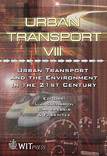Urban Freight Movement: A Quantity Attraction Model
Price
Free (open access)
Transaction
Volume
60
Pages
10
Published
2002
Size
493 kb
Paper DOI
10.2495/UT020801
Copyright
WIT Press
Author(s)
F. Russo & A. Comi
Abstract
The freight that is transported each day in an urban centre maybe grouped into various categories. From the analysis of vehicle flow for freight transport in an urban context, the transport of foodstuffs and household products accounts for between 70%and 82% [1]; moreover, such goods are purchased by end consumers in their zone of residence. A general classification for freight demand models is given by Garrido and Regan [2]. Urban freight models can be classified into several classes: gravitational [3,4,5,6,7,8,9]; input-output models [10]; spatial equilibrium of the prices [11]. A multi-step model, that considers different decision-makers, presented [12]: quantity attraction and distribution models, an acquisition model, models for the choice of service and vehicle type, and path choice model. Models for the aggregate estimation of quantities of goods bought and sold for o/d pairs constitute the first block of models required for simulating urban fi-eight traffic [13]. To obtain preliminary results some surveys were conducted in a medium-size city. In this paper, in relation to the first step, the following attraction model will be specified and calibrated for perishables and household products, in terms of quantity, and for durable goods in terms of goods trips.
Keywords





